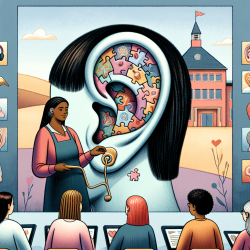Introduction
In today's rapidly evolving educational landscape, the integration of telehealth services in schools is revolutionizing how we approach special education. School social workers play a pivotal role in fostering a nurturing environment for students, and with the advent of online therapy services, their capacity to create meaningful change is amplified. This blog delves into how telehealth can build a supportive community within schools, backed by data-driven insights and real-world examples.
The Role of Telehealth in Special Education
Telehealth has emerged as a powerful tool in special education, providing accessible and flexible therapy options for students who need them most. By utilizing online platforms, schools can ensure that students receive consistent and high-quality care, regardless of geographical constraints. This is particularly crucial for students in rural or underserved areas where access to specialized services might be limited.
Data indicates that telehealth can effectively address a variety of needs, from speech therapy to psychological support. According to a study published in the Journal of Telemedicine and Telecare, telehealth interventions have shown comparable outcomes to traditional in-person therapy, with the added benefit of increased convenience and reduced absenteeism.
Creating a Supportive Community
At the heart of telehealth's success in schools is its ability to foster a sense of community among students, educators, and therapists. By connecting through online platforms, school social workers can collaborate more effectively with teachers and parents to create a holistic support system for each student.
Here are a few ways telehealth contributes to community building in schools:
- Enhanced Collaboration: Telehealth facilitates seamless communication between all stakeholders, ensuring that everyone is on the same page regarding a student's progress and needs.
- Increased Engagement: Students often feel more comfortable engaging in therapy sessions from familiar environments, leading to more effective and meaningful interactions.
- Resource Sharing: Online platforms provide access to a wealth of resources and tools that can be shared among educators, therapists, and families to support student development.
Inspiring Outcomes
The impact of telehealth in schools extends beyond immediate therapeutic outcomes. By building a strong community around students, we empower them to thrive academically, socially, and emotionally. For instance, a case study from a school district in Ohio reported a 30% improvement in student engagement and a 25% decrease in behavioral issues after implementing telehealth services.
Moreover, telehealth allows for personalized care plans that are tailored to each student's unique needs, ensuring that no child is left behind. This individualized approach not only enhances learning outcomes but also instills confidence and resilience in students.
Conclusion
As school social workers continue to navigate the complexities of special education, telehealth stands out as a transformative tool that promotes inclusivity and community building. By leveraging data-driven insights and embracing the potential of online therapy services, we can inspire positive change and create a supportive environment where every student has the opportunity to succeed.
We invite you to explore how telehealth can benefit your school community and look forward to working together to achieve great outcomes for children.










